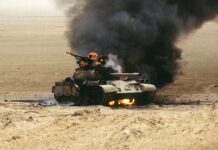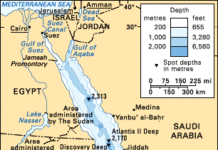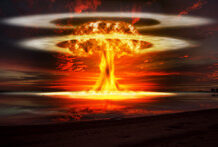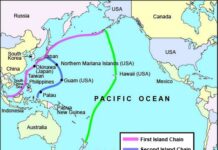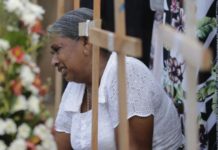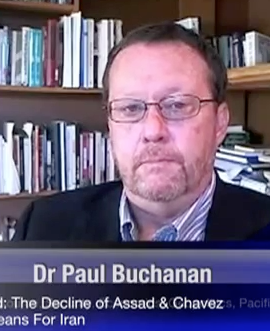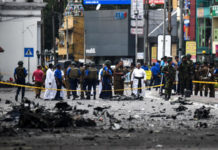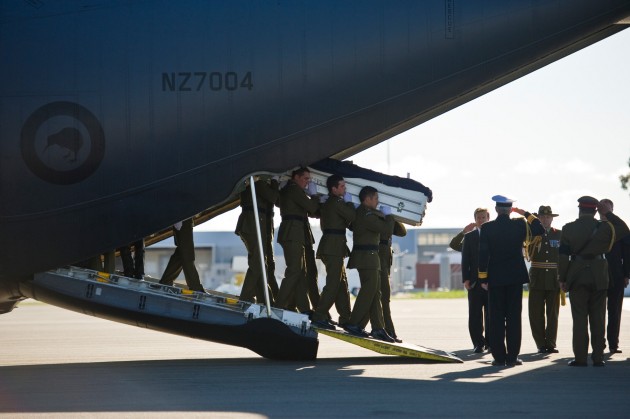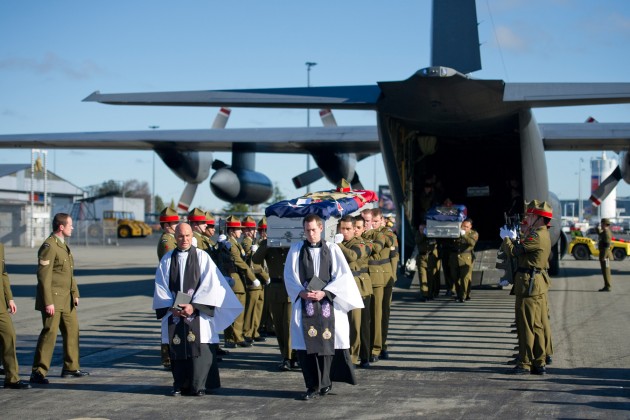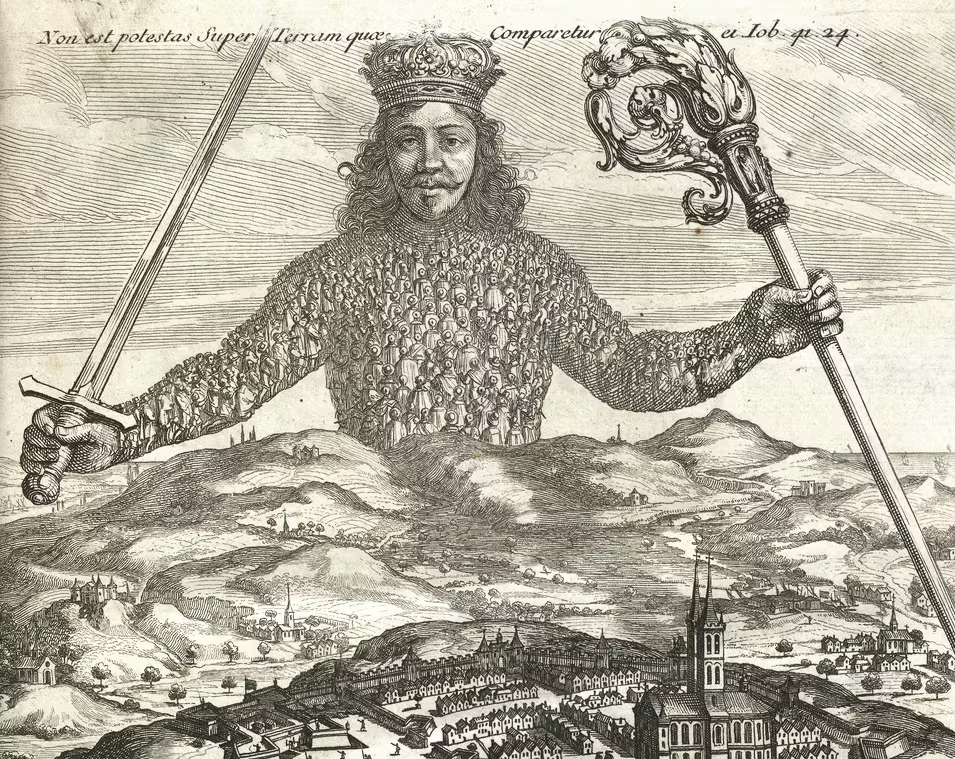Afghanistan: Beefing Up In Order To Leave
Analysis – By Dr Paul G. Buchanan.
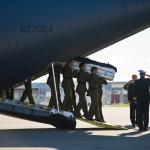 In the wake of the most recent NZDF deaths in Bamiyan Province, the New Zealand Prime Minister has decided to accelerate the timetable for withdrawal of NZDF from the Bamiyan Provincial Reconstruction Team to April 2013. After that the PRT will remain in UN and local hands. The original withdrawal date, originally slated for 2014, had been moved up to late 2013 after discussions with the International Security Assistance Force (ISAF) partners, but the April date represents a six month advance on that deadline. Even so, the Prime Minister Key says that his government will not “cut and run” on its obligations to ISAF, NATO and the UN (and presumably the Hazara people who are the majority in Bamiyan but who are an oft-oppressed ethnic and religious (Shiia) minority in Pashtun Sunni-dominated Afghanistan). That means that for the next eight months the NZDF will continue its mission regardless of what comes its way in Bamiyan.
In the wake of the most recent NZDF deaths in Bamiyan Province, the New Zealand Prime Minister has decided to accelerate the timetable for withdrawal of NZDF from the Bamiyan Provincial Reconstruction Team to April 2013. After that the PRT will remain in UN and local hands. The original withdrawal date, originally slated for 2014, had been moved up to late 2013 after discussions with the International Security Assistance Force (ISAF) partners, but the April date represents a six month advance on that deadline. Even so, the Prime Minister Key says that his government will not “cut and run” on its obligations to ISAF, NATO and the UN (and presumably the Hazara people who are the majority in Bamiyan but who are an oft-oppressed ethnic and religious (Shiia) minority in Pashtun Sunni-dominated Afghanistan). That means that for the next eight months the NZDF will continue its mission regardless of what comes its way in Bamiyan.The New Zealand Prime Minister has said that the NZDF troops have adequate equipment with which to defend themselves and that no major increases in troop numbers is needed to fulfill the PRT mission requirements. He and the Chief of Defense Forces have also said that they will increase patrols, including into neighboring Baghlan province, in order to prevent and interdict cross-border incursions by Taliban such as those that have resulted in the deaths of the New Zealand soldiers this month (we shall leave aside the snide critique by Mr. Key of the Hungarian PRT in Baghlan since its rules of engagement (ROE) never involved long-range patrols and the Hungarian government has never succumbed to the pressure to do so (seeing it for what it is: “mission creep”). Other Hungarian forces as well as those of ISAF partners did and do conduct day and night patrols in Baghlan). The government has gone on to say that the NZDF have been successfully engaged in a “hearts and minds” campaign as part of their patrols in Bamiyan, which is what has prompted the increase in attacks by the Taliban.
There are several aspects to the account that I find interesting. When the original timetable for withdrawal was announced by ISAF, the Taliban commander Mullah Omar and several of his lieutenants publicly stated that they would increase attacks on all coalition members in order to push them out earlier. They well understood that with a timetable fixed and with the Taliban, as an indigenous armed political force, in Afghanistan to stay, an increased tempo of attacks might force some coalition partners to depart earlier than schedule rather than suffer mounting losses. Add in the fact that the democratic policy-making processes of many ISAF coalition members make them very susceptible to public opinion, then a wave of increased attacks leading to increased losses could well move the political calculation with regards to withdrawal towards earlier rather the later. Indeed, some junior coalition partners have already departed.
In the past year, as the predicted attacks in Bamiyan increased, the nature of the PRT mission changed as well. From its primary objective of reconstruction and capacity-building it moved to force protection, indigenous security training and armed patrol. In recent months and in light of the anticipated withdrawal date, the latter functions–force protection, indigenous security training and armed patrol–have taken precedence over the reconstruction aspects of the mission (which are being handed over to civilian authority in any event).
In response, the last two PRT rotations (October 2011-April 2012, April 2012-present) have seen changes in force composition to more infantry troops and less engineers. Among other shifts, explosive ordinance disposal (EOD) specialists have been priority detailed to the mission. Infantry soldiers replaced engineers because the former are the means by which the hearts and minds, force protection and indigenous mentoring campaigns are undertaken, plus reconstruction work is already passing to civilian hands. Field medics are needed in equal or more numbers given their increasing combat requirement sharing space with the original public health orientation of the PRT.
The armed Hiluxs that were initially used for “light” patrols were replaced by “up-armored” Humvees and then later by the infamous Light Armored Vehicles (LAVs, or as the US prefers to call them “Strykers”). Although reinforced in theater, neither of these type of vehicle have the V shaped hulls that are the best defense against IED blasts. The LAVs also are not suitable for steep narrow tracks or water crossings, so their presence is most effective in and around the capital of Bamiyan (Bamiyan City). Once NZDF patrols pushed further afield the onus of safety fell on the foot soldiers involved, since dismounted tactics are the most effective tools against small dispersed groups of insurgents given the challenging terrain in which the NZDF is forced to operate.
This shift in troop specialization was reasonable given the increasing pace of attacks, which included Improvised Explosive Devices (IEDs) as well as small arms ambushes in growing numbers (besides the ambush in which Lt. Tim O’Donnell was killed in 2010, there have been multiple IED and small arms attacks on NZDF convoys and patrols during the past 18 months). As independent observers have noted all along, the security situation in Bamiyan, as in the rest of Afghanistan, has deteriorated markedly since the withdrawal date was announced. It is therefore not surprising that the NZDF has come under increasing attack, and although sad, it is not surprising that it has suffered losses as a result. What is even more sad is that in spite of the worsening security situation, until very recently the New Zealand government insisted that the situation in Bamiyan was relatively stable and safe, perhaps because it feared what the public response would be if it told the truth.
Now confronted with the harsh reality of the situation, the government has announced its plan to extend NZDF patrols in Bamiyan and into Baghlan and to continue the hearts and minds approach to counter-insurgency. It also says that while doing so it will not significantly increase the combat force complement of the Bamiyan PRT nor raise overall troop numbers much above the 149 currently deployed. That seems odd.
The combination of extended patrols and hearts and minds is essentially the core of the inkblot counter-insurgency strategy that US generals David Petreus and Stanley McCrystal used in Iraq and Afghanistan. It involves stationing troops in villages or in forward outposts alongside local security forces, where they live and work amongst the local population. This gives them an extended armed presence that allows for better collection of local intelligence via the cultivation of personal ties with locals, and is seen as a way of incrementally denying the enemy control of territory in the measure that the various “dots” expand their areas of effective control and begin to merge jurisdictions. On the downside, it also makes the troops involved more vulnerable, particularly to so-called “green on blue” attacks in which local security personnel turn their arms on their foreign mentors (the Taliban have deliberately infiltrated both the Afghan National Army and National Police in order to engage this tactic, with remarkable success).
In order to undertake the inkblot counter-insurgency strategy, both Petreus and McCrystal argued that a “surge” in troops was necessary. That is, more armed “boots on the ground” were required in order to extend the range and scope of operations beyond the fixed bases and daily patrols that characterized the conventional approach to securing the countryside (which was premised on the attrition of enemy fighters resulting in a diminished level of armed conflict). Thus in Iraq and Afghanistan thousands of extra troops were deployed as part of the inkblot surge in order to push the enemy back and secure better conditions for both locals and foreign troops in the months ahead of the withdrawal date. The idea is to not only place the enemy on the defensive in order to give time and space to local forces to more effectively secure their own areas of responsibility, but also to set a more favorable stage for local authorities to negotiate the nature of the post-withdrawal regime. After all, it is better to negotiate from a position of strength than weakness. The inkblot surge is designed to provide the conditions for that to occur.
That is basically what the New Zealand government is arguing in favor of, but without the surge. In a place like Bamiyan, the stated intent to extend patrols as part of an upgraded hearts and minds campaign would appear to require more than the current number of soldiers. In fact, it would seem that an infantry company (around 130 soldiers) would be the basic minimum amount required to “surge.” The question is whether the NZDF has such a capability ready to deploy even if the government would like that to happen. And even if that is the case–that the government wants to undertake the surge and the NZDF can do so–the follow up question is whether that would be politically palatable to the New Zealand public (most would argue that it is not). If the answer to any of these questions is no, then what exactly does the government think that the NZDF can do in Bamiyan to decrease the number of attacks on its troops?
At current levels the PRT cannot not cope with a rising wave of attacks. The IED on the NZDF medivac convoy was placed at night less than 15 kilometers from the PRT base in Bamiyan City.The placement of the IED appears to have been done after the medivac patrol headed out to retrieve the ill soldier from a forward post and in anticipation of its return. There were no LAVs on the medivac mission because they were too large and heavy for the dirt road leading to the post, so four Humvees were used.
The Prime Minister and Chief of Defence Forces say that the IED had 20 kilos of explosives, so a LAV would not have survived the blast either. It is also possible that the triggering device did not act according to plan, resulting in a signal delay that transferred the IED blast from the first to the last Humvee (and which could well have made impossible a small arms attack once the convoy stopped). Both may be true, but the ability of insurgents to carry, place and detonate a 20 kilo IED close to the main Kiwi base in Bamiyan on a known route to and from an NZDF forward post without being detected should be a point of discussion in NZDF HQ. After all, mine sweeping is a requisite for mine defusing, and finding one after a fatal attack demonstrates that the NZDF EOD capability in Bamiyan is lagging behind that of the Taliban bomb-makers (one of whom is said to be the target of the previous fatal ambush and who is suspected of participating in the latest attack).
Since the NZDF cannot be everywhere at once, that means that the insurgents have at least partial control of the night very close to the PRT. Moreover, the IED appears to have been detonated by remote control rather than pressure plate, which means that the trigger man had a daylight line of sight on the convoy as it passed the blast zone. What that means, in sum, is that the Taliban operate very close to the PRT itself and can move with some impunity at night even when in close proximity to the very area in which the bulk of New Zealand troops are stationed. That is troubling.
The Prime Minister has given assurances that other country’s special forces will come to the aid of the NZDF if need be. However, other country’s special forces have their hands full in places like Kandahar and Helmand provinces. The bulk of the fighting in Afghanistan is happening in the South and East, not in the Central Northwest where Bamiyan is located. That fighting occupies the full attention of the ISAF forces involved. Even if airborne reinforcements were sent from Kabul (which is about 100 kilometers away from Bamiyan), it may be too late for them to make the difference in any given confrontation.
Expanded combat patrols and increased forward basing mean more chances of contact with the enemy. More contact means more potential casualties. The best way to avoid losses is to have robust forces on the ground close to the point of contact(s) because air cover is not always available in real time, at the moment of engagement. That is why extended patrolling and variations of inkblot approaches to counter-insurgency require more ground troops in theater.
It is unrealistic and dangerous for anyone to suggest that the NZDF will increase and expand its patrols in the months leading to the April 2013 withdrawal date without increasing the number of troops it will dedicate to that task. Perhaps there is something in the New Zealand government or NZDF game plan that will do what even the US could not do, which is to embark on an inkblot counter-insurgency strategy without a troop surge in the six months before departure.
If the New Zealand government cannot or will not commit more troops to Bamiyan, then it should suspend its long range patrols and consolidate its position in and around Bamiyan City while it prepares to leave. An entrenched and reinforced defensive position weighed with infantry, although giving up the countryside to the insurgents, has the virtue of making the last six months in theater more safe for the majority of the soldiers involved in the last rotation. The insurgents will mostly wait until the New Zelanders leave, with periodic reminders of their lethal presence. The local population will be put on notice as the the shifting power dynamic and adjust their bargaining strategies accordingly.
If the aim is to help strengthen local security force control of territory and push the Taliban back in advance of the withdrawal, then the only secure option in the face of the insurgent strategy is to increase the number of NZDF infantry dedicated to the task. To do one without the other increases the possibility of more NZDF casualties and is the worst of all possible solution sets to the problem in theater.
NZDF soldiers in the next (and last) Bamiyan PRT rotation scheduled to begin in October are in for a very challenging six months. Their training and resolve will be tested, and is the best means of ensuring that they all return safely. However, while it is good to hope for the best, it is prudent for the New Zealand public to plan for the worst. There are trying days ahead.


